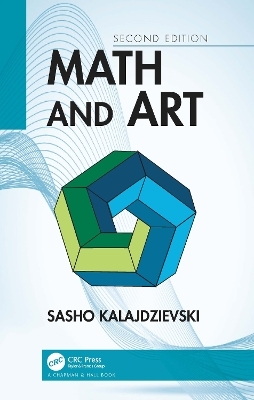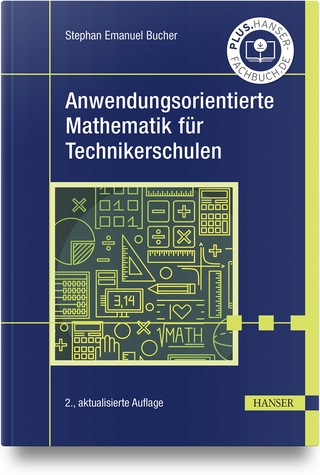
Math and Art
Chapman & Hall/CRC (Verlag)
978-0-367-07611-5 (ISBN)
Math and Art: An Introduction to Visual Mathematics explores the potential of mathematics to generate visually appealing objects and reveals some of the beauty of mathematics. It includes numerous illustrations, computer-generated graphics, photographs, and art reproductions to demonstrate how mathematics can inspire or generate art.
Focusing on accessible, visually interesting, and mathematically relevant topics, the text unifies mathematics subjects through their visual and conceptual beauty. Sequentially organized according to mathematical maturity level, each chapter covers a cross section of mathematics, from fundamental Euclidean geometry, tilings, and fractals to hyperbolic geometry, platonic solids, and topology. For art students, the book stresses an understanding of the mathematical background of relatively complicated yet intriguing visual objects. For science students, it presents various elegant mathematical theories and notions.
Features
Provides an accessible introduction to mathematics in art
Supports the narrative with a self-contained mathematical theory, with complete proofs of the main results (including the classification theorem for similarities)
Presents hundreds of figures, illustrations, computer-generated graphics, designs, photographs, and art reproductions, mainly presented in full color
Includes 21 projects and approximately 280 exercises, about half of which are fully solved
Covers Euclidean geometry, golden section, Fibonacci numbers, symmetries, tilings, similarities, fractals, cellular automata, inversion, hyperbolic geometry, perspective drawing, Platonic and Archimedean solids, and topology
New to the Second Edition
New exercises, projects and artworks
Revised, reorganized and expanded chapters
More use of color throughout
Sasho Kalajdzievski is the professor in the Mathematics department at University of Manitoba
Chapter 1. Euclidean Geometry. 1.0. Introduction. 1.1. The Five Axioms of Euclidean Geometry. 1.2. Ruler and Compass Constructions. 1.3. The Golden Ratio. 1.4. Fibonacci Numbers. Chapter 2. Plane Transformations. 2.1. Plane Symmetries. 2.2.* Plane Symmetries, Vectors, and Matrices (Optional). 2.3. Groups of Symmetries Of Planar Objects. 2.4. Frieze Patterns. 2.5. Wallpaper Designs and Tilings of the Plane. 2.6. Tilings and Art. Chapter 3. Similarities, Fractals, and Cellular Automata. 3.1. Similarities and some other Planar Transformations. 3.2.* Complex Numbers (Optional). 3.3. Fractals: Definition and Some Examples. 3.4. Julia Sets. 3.5. Cellular Automata. Chapter 4. Hyperbolic Geometry. 4.1. Non-Euclidean Geometries: Background and Some History. 4.2. Inversion. 4.3. Hyperbolic Geometry. 4.4. Some Basic Constructions in the Poincaré Model. 4.5. Tilings of the Hyperbolic Plane. Chapter 5. Perspective. 5.1. Perspective: A brief overview of the Evolution of the rules of perspective. 5.2. Perspective Drawing and Constructions of Some Two-Dimensional (Planar) Objects. 5.3. Perspective Images of Three-Dimensional Objects. 5.4.* Mathematics of Perspective Drawing: A Brief Overview (Optional). Chapter 6. Some Three-Dimensional Objects. 6.1. Regular and Other Polyhedra. 6.2. Sphere, Cylinder, Cone, and Conic Sections. 6.3. Geometry, Tilings, Fractals, and Cellular Automata in Three Dimensions. Chapter 7. Topology. 7.1. Homotopy of Spaces: An Informal Introduction. 7.2. Two-Manifolds and The Euler Characteristic. 7.3. Non-Orientable Two-Manifolds and Three-Manifolds. Appendix: Classification Theorem for Similarities. Solutions.
| Erscheinungsdatum | 17.08.2020 |
|---|---|
| Zusatzinfo | 780 Illustrations, color |
| Sprache | englisch |
| Maße | 178 x 254 mm |
| Gewicht | 1000 g |
| Themenwelt | Mathematik / Informatik ► Mathematik ► Angewandte Mathematik |
| Mathematik / Informatik ► Mathematik ► Geometrie / Topologie | |
| ISBN-10 | 0-367-07611-X / 036707611X |
| ISBN-13 | 978-0-367-07611-5 / 9780367076115 |
| Zustand | Neuware |
| Haben Sie eine Frage zum Produkt? |
aus dem Bereich


